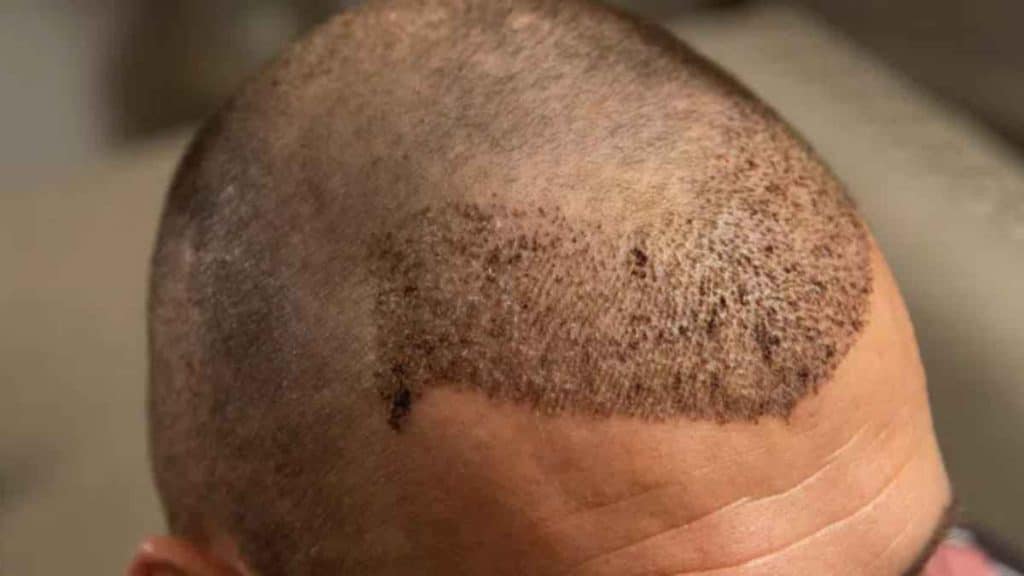Balding is a common phenomenon that involves hair thinning, often progressing to complete hair loss in specific areas of the scalp. It occurs due to various reasons, including genetic predisposition and hormonal changes.
Statistics indicate that many men and women experience balding to some degree, with the incidence increasing with age. Understanding the balding patterns can be crucial in finding effective treatment strategies and mitigating further hair loss.
Understanding the underlying causes of balding can empower individuals to take proactive steps in managing hair loss effectively. This section delves into the various factors contributing to balding, providing a comprehensive view of this common concern.
Balding Factors
- Genetic Predisposition: A substantial number of balding cases are due to genetics.
- Hormonal Changes: Hormones play a significant role in hair health.
- Nutritional Deficiencies: Nutrition is foundational to hair health, including Iron Deficiency, Vitamin D and B12 Deficiencies.
- Medical Conditions: Certain medical conditions can lead to hair loss. In this segment.
- Alopecia Areata: An autoimmune disorder that often results in unexpected hair loss.
- Scalp Infections: infections can disrupt the hair growth cycle and lead to balding.
- Medications and Treatments: Some treatments and medications can have hair loss as a side effect like Chemotherapy and Prescription Medications.
- Lifestyle Factors: lifestyle choices can also impact hair health. We explore:
- Stress and Sleep: Chronic stress and lack of sleep can lead to hair thinning and loss.
- Smoking and Alcohol: Smoking and excessive alcohol consumption affect hair health.
- Hair Care Practices: hair care practices can affect hair health.
- Over-styling and Chemical Treatments Can weaken hair and lead to hair loss over time.
- Tight Hairstyles that pull tightly on the scalp can cause traction alopecia.
Types of Hair Grafts
Embarking on a journey to address hair loss can be overwhelming, but understanding the different hair graft techniques available today can be an empowering first step.
A hair graft is typically a small piece of skin containing hair follicles transplanted from a donor area (typically the back or side of the head where hair is plentiful) to a recipient area where hair is thinning or absent. These grafts can range from containing a single hair follicle to several follicles.
Hair Grafting Techniques
The journey of hair transplantation has been marked by constant innovation, refining the process to enhance natural-looking results and minimize scarring.
- Historical Overview: Earlier methods of hair transplantation, which often involved using larger grafts or plugs, unfortunately often resulted in an unnatural appearance.
- Micrografting: With advancements in technology, micrografting became the gold standard. This technique uses smaller grafts for a more natural look.
- Advancements in Equipment: State-of-the-art tools and refined surgical techniques now allow for precision extraction and implantation of hair grafts, ensuring higher graft survival rates.
Pre-operative Considerations
Before diving into a hair graft procedure, being informed and prepared is essential.
- Medical Evaluations: It’s imperative to undergo a comprehensive medical assessment to ensure you’re a good candidate for the procedure. This evaluation might include blood tests and a review of medical history.
- Scalp Analysis: A detailed examination of your scalp will help understand the density, hair caliber, and the number of grafts required. Your surgeon might suggest 5000 grafts hair transplant. You can analyze and research 5000 grafts hair transplant cost Turkey. Some clinics might use advanced imaging systems for this analysis.
- Treatment Goals: Define clear expectations with your surgeon. While hair grafts can offer significant improvements, results can vary based on individual factors.
The world of hair grafting techniques is ever-evolving, but a few methods have stood the test of time because of their efficacy.
- Follicular Unit Transplantation (FUT): This method involves removing a strip of skin with hair follicles from the donor area. The strip is dissected into individual grafts and transplanted to the recipient site. While effective, this method can leave a linear scar in the donor area.
- Follicular Unit Extraction (FUE): Unlike FUT, FUE involves extracting individual hair follicles directly from the donor area, which are then transplanted to the recipient site. This method minimizes scarring, making it a popular choice.
- Robotic Hair Transplantation: An evolution of FUE, this method uses robotic graft extraction and placement technology, ensuring even greater precision.
Choosing the Right Clinic and Specialist
Selecting the right clinic and specialist is a decisive step in your hair graft journey. We will guide you on:
- Accreditation and Certification: Emphasizing the importance of choosing a certified specialist and accredited clinic.
- Reviews and Testimonials: How to utilize reviews and testimonials to gauge the credibility of a clinic or specialist.
- Consultation: The aspects to cover during a consultation to ensure you make an informed decision.
Understanding the intricate landscape of balding patterns and the progressive techniques available in hair grafts can be your foremost ally in navigating hair loss. Recognizing the underlying causes of balding — be it genetic, hormonal, or related to lifestyle choices — allows for a targeted approach to management and treatment.
Meanwhile, familiarizing oneself with various hair graft techniques paves the way for informed decisions tailored to individual needs and preferences. As we advance in the field of hair restoration, a personalized approach grounded in knowledge and understanding stands as the cornerstone of successful hair rejuvenation journeys.
We encourage individuals facing hair loss to leverage this knowledge as a powerful tool in reclaiming their hair, confidence, and well-being.


